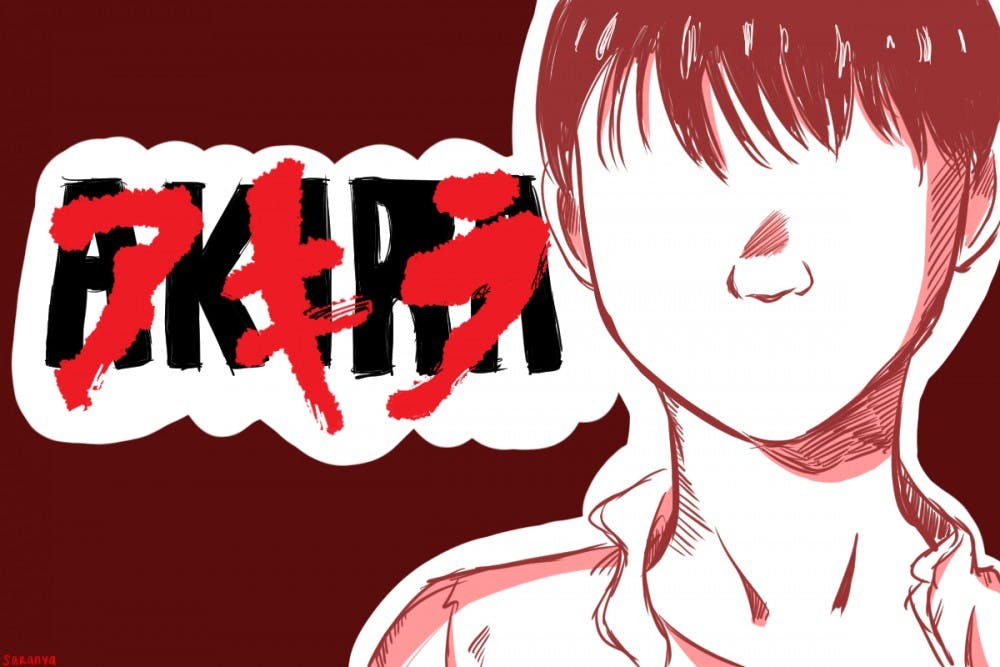In possession of a 1.1-billion-yen budget, a massive bank of source material, and a story steeped in destruction, brotherhood, and power, Akira (1988) was set up to succeed.
In a post–WWIII, neon–lit, urban Tokyo called Neo–Tokyo, tax reform riots and student protestors share the streets with teenage-led bike gangs out for blood. Akira revolves around Kaneda and Tetsuo, two rowdy teenagers who thrive in messy Neo–Tokyo. After a biking accident, Tetsuo undergoes mental and physical transformations in an attempt to harness his newfound god–like, telekinetic power, and Kaneda follows Tetsuo to put an end to his moral and mental descent.
Akira saw its 30th anniversary last July. Since its premiere, interest in the movie has remained constant, with articles and video essays circulating the internet and fans perpetuating rumors about a live-action remake. Fans respect Akira not just for its nostalgic properties, but also for its nuanced interpretation of post–WWII Japan, and its introduction of Japanese anime to the West. This, in combination with the fluidity of animation at 24 frames per second place it on a pedestal, and it's impact has reached media far and wide, from Stranger Things to Kanye West music videos. It has undoubtedly been a source of great cultural significance over the past three decades, but significant is not always synonymous with entertaining. Luckily, in Akira’s case, it’s both.
Akira’s boom was before my time. Its Japanese and American release dates, in 1988 and 1989 respectively, predate my birth. Unlike fans who have followed Akira from the start, my first anime was one of the early 2000’s Pokémon movies. I watched shows like Fullmetal Alchemist: Brotherhood and Tengen Toppa Gurren Lagann before I even knew what Akira was. When I did discover it (while browsing lists of “best animated movies of all time”), I discovered an old classic, something that none of my friends—not even my brother—had seen.
And then, my first viewing of Akira flopped.
Akira condenses six volumes of manga—which took eight years to complete—into a two hour movie. As expected, most of the content in the manga is cut from the movie. Chunks of character development and entire side–plots are removed from the original story. Integral characters in the manga are reduced to simple metaphors for different parts of Japanese society: religion, corruption, militarism. But so much of the original story remains in Akira—Tetsuo’s inferiority complex with his unequal power dynamic with Kaneda, the Colonel’s military coup in the face of Akira’s rebirth, Kei’s first kill and sobering humanity in a world of gratuitous violence—that on a first viewing, Akira may be too much to swallow.
Akira excels, on a surface level, in its grandiose dystopian world building, which highlights the cost the residents of Neo–Tokyo pay to live in a world post–destruction. The main narrative of Akira can be confusing and often feels rushed, but the world that Akira creates, brimming with dynamic violence and bright colors, is enough to engross any viewer for its run time. What I took from Akira after my own first time was that red, the color that saturates the film—from blood spilled to the sheen of Kaneda’s bike—is vibrant and beautiful.
But I’ll be honest, Akira is best rewatched. Two, three, four rounds. On my second viewing, I heard the TV in the background reporting on public protests, I understood the gravity of the execution–style police shooting within the first 10 minutes of the movie, and I followed the camaraderie in Kaneda’s declaration to kill Tetsuo by his own hands. Within the grand Neo–Tokyo are characters and human relationships that are bound by traditions and rules, both old and new. It is these dynamics, that can be emulated in the real world around us, that bring Akira to life.
Anime has changed since 1988, as all things do. Mirai, which has been welcomed into this year’s batch of Academy Award nominees, is drastically different from Akira. Not only Mirai—Your Name, which took 2017 by storm, A Silent Voice (2016), and Mary and the Witch’s Flower (2017) all cannot compare to the cyberpunk–thriller Akira in any shape or form. In the 31 years since its initial release, and especially in recent years, nothing has risen to test animation and audiences as acutely as Akira did.
Three decades down the line, Akira has fans. Dedicated, obsessed fans. There’s a reason why.

